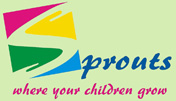
An ISO 9001:2015 Certified Pre-School
| First day at Play school |
||
 |
•Easing Your Child's Fears•The First Day | |
There are plenty of benefits of preschool - it can be a great place for kids to interact with peers and learn valuable life lessons such as how to share, take turns, and follow rules. Prechool can also prepare kids for kindergarten and beyond. But going to preschool does come with lot of emotions, for both the parent and the child. For a kid, entering a new preschool environment filled with unfamiliar teachers and children can cause both anxiety and anticipation. For parents, there may be mixed emotions over whether the child is ready for preschool. The more comfortable you are about your decision to place your child in preschool and the more familiar the setting can be made for your child, the fewer problems you - and your little one - will encounter. Easing Your Child's Fears Visiting your child's first preschool classroom a few times before school starts can also ease the entrance into unfamiliar territory. This offers the opportunity to not only meet your child's teacher and ask about routines and common activities, but to then introduce some of those routines and activities to the child at home. While you're in the classroom, let your child explore and observe the class in his or her own way and choose whether to interact with other children. The idea is to familiarize your child with the classroom and to let him or her get comfortable. You can also use this time to ask your child's new teacher how he or she handles the first tear-filled days. How will the first week be structured to make the transition smooth for your child? Although it's necessary for you to acknowledge the important step your child is taking and to provide support, too much emphasis on the change may just make your child's anxiety worse. Young kids can pick up on their parents' nonverbal cues. If you feel guilty or worried about leaving your child at school, he or she will probably sense that. The more calm and assured you are about your choice to send your child to preschool, the more confident your child will be. The First Day If your child clings to you or refuses to participate in the class, don't get upset - this may only upset your child more. Follow the guidelines described by the teacher beforehand, and go at your child's pace. Suggestions for leaving your child at preschool are simple but can be hard on a parent. Always say a loving good-bye to your child, but once you do, you should leave promptly. Never sneak out. As tempting as it may be, leaving without saying good-bye may make your child feel abandoned, whereas a long farewell scene might only serve to reinforce a child's sense that preschool is a bad place. A consistent and predictable farewell ritual can make leaving easier. Some parents wave from outside a certain classroom window or make a funny good-bye face, whereas others read a short book before parting. Transitional objects - a family picture, a special doll, or a favorite blanket - can also help comfort your child. Also, keep in mind that most children do well once their parents leave. Regardless of whether your child is eager or reluctant to go to preschool, make sure that a school staff member is ready to help with the transfer from your care to the classroom when you arrive in the morning. Some kids may jump right in with their classmates, whereas others might want a private cuddle and a story from a caregiver before joining the group. Many preschools begin with a daily ritual, such as circle time (when teachers and children talk about what they did the day before and the activities that are ahead for the day). Preschoolers tend to respond to this kind of predictability and following a routine will help ease the move from home to school.
|
||
| Source: Internet | ||